Where the well-heeled would shop in early 20th-century Calcutta
https://www.telegraphindia.com/my-kolkata/places/calcuttas-colonial-era-department-stores/cid/1844374
The colonial buildings of the Chowringhee area once housed glorious department stores that catered to Indian and British high-society clients
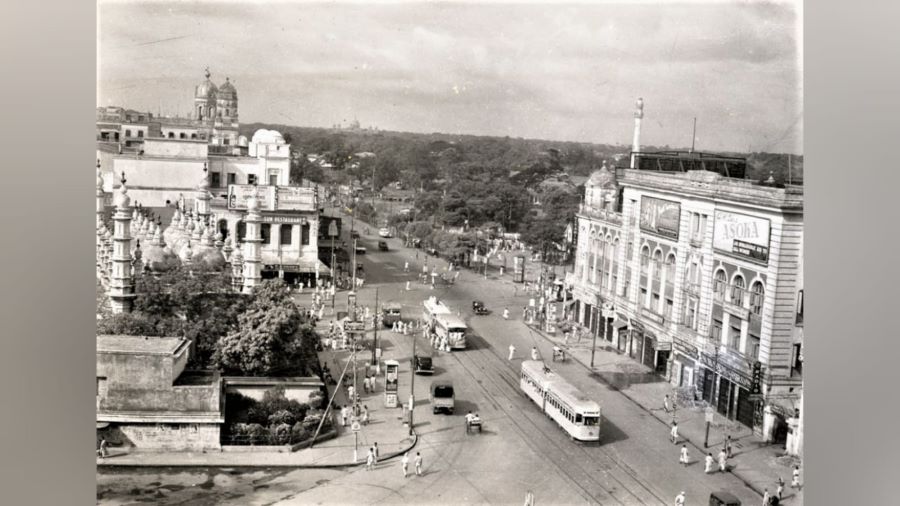
Chowringhee Road was the most sought-after downtown address of the city and where the 20th-century department stores flourished
Frank Bond Collection/Digital South Asia LibraryIn the self-illustrated book Jakhan Choto Chilam, published in 1982, Satyajit Ray vividly portrays Calcutta of the 1900s, the city where he grew up. Featured in this autobiographical volume is the upper floor of Whiteaway, Laidlaw and & Co, which seemed to transform into Toyland during Christmas — complete with a toy train winding through a well-crafted, mountain landscape model.
One of the classiest stores in the city, and perhaps in Asia, Whiteaway Laidlaw was one of three poshest department stores in Calcutta at the time. Though the stores have long shut shop, a stroll down Kolkata’s Chowringhee Road (now Jawaharlal Nehru Road) will bring you face to face with the gorgeous buildings that housed them.
Whiteaway, Laidlaw and & Co
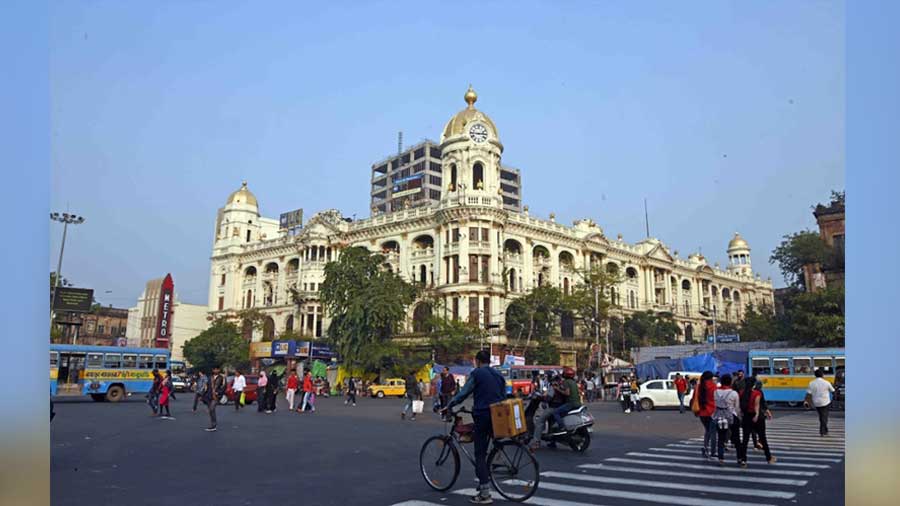
Now known as the Metropolitan Building (above), the old Whiteaway, Laidlaw & Co building (below) still retains the grandeur of its original facade
Amit Datta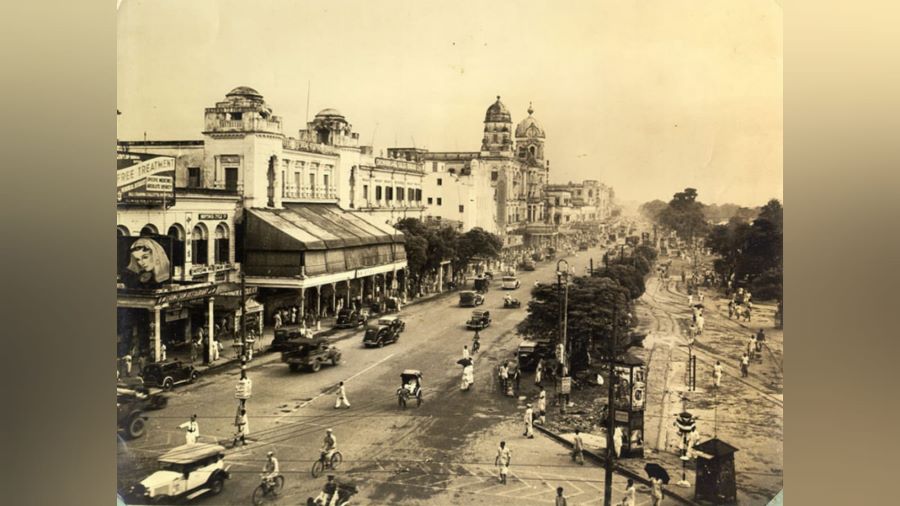
Close to Esplanade crossing stands the majestic white building built in the late 1900s by Calcutta-based contractors Mackintosh Burn & Co. It once housed the famous Whiteaway, Laidlaw & Co. Now known as the Metropolitan building and owned by the Life Insurance Corporation of India, it is a fine example of neo-Baroque architecture, complete with domes, a clock tower, Corinthian columns and recessed arched windows. The interiors boasted of marbled floors, barrel-vaulted stained glass arcades and gangways to reach the upper storeys, where private apartments were located.
Until 1962, the lower two floors were dedicated to the department store, where imported luxury and leisure labels found a place. There was also a tea room to take a break and sip on freshly brewed Darjeeling tea that came from the estates of Sir Robert Laidlaw himself. The no-credit policy had earned Whiteaway Laidlaw an interesting rhyming nickname — ‘Right-away, Paid-for’.
In the 2000s, the building was put on Kolkata’s heritage list and restored starting 2003. Unfortunately, the renovation raised some concerns and much of the old features of the interiors were lost. The show-stopping stained glass atrium inside had long caved in, but the facade of the building still retains much of its original grandeur.
Army and Navy Stores
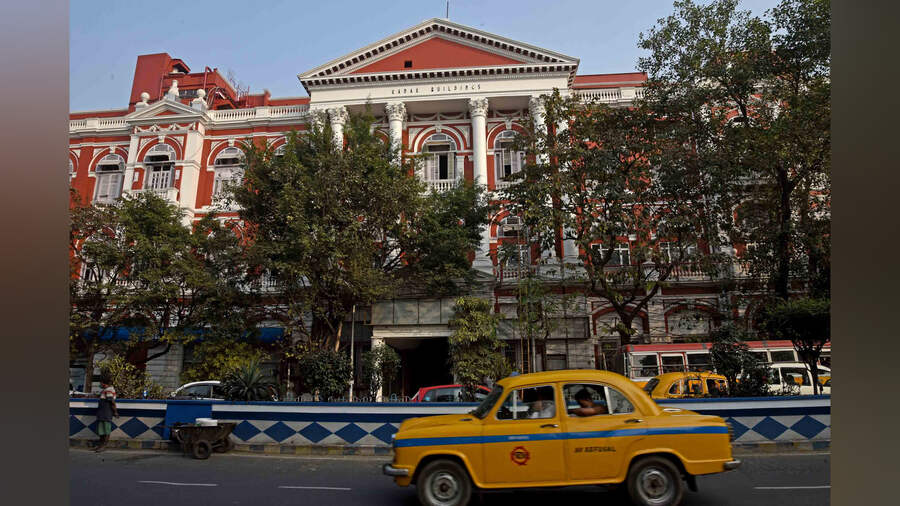
Now known as Kanak Building (above), the Calcutta branch of the Indian Army and Navy Stores (below) opened with fanfare in 1901
Amit Datta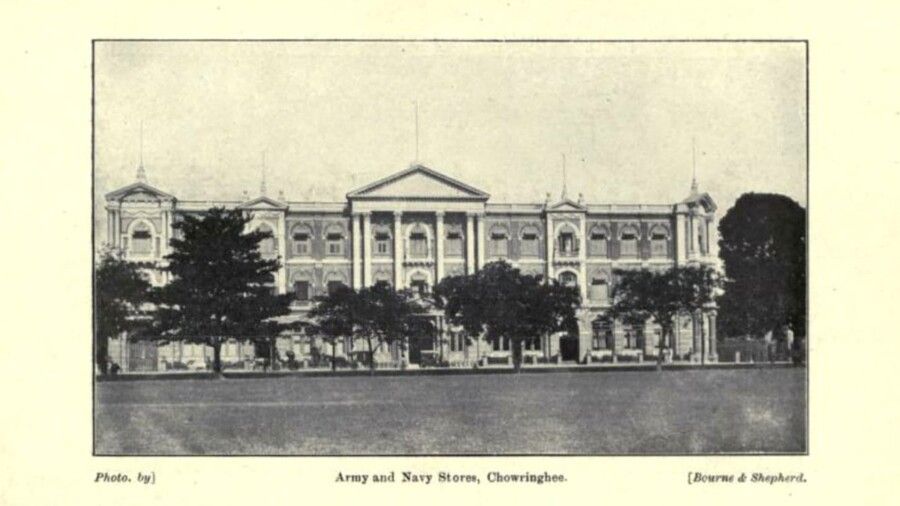
The red-and-white Edwardian edifice that sprawls out from the corner of Middleton Street is now known as Kanak Building. The slender set of Corinthian columns holding up the ornate central pediment is the most striking feature of the elegant, expansive façade adorned with crescent-shaped arches and stuccoed spandrels. This was the Calcutta branch of the Indian Army and Navy Store.
A group of military officers created the Army and Navy Co-operative Society in the late 1800s in London to supply consumer goods at affordable prices to outstation military personnel and civil servants who craved a piece of home. The first Indian Army and Navy store opened in Bombay, and then in 1901, the Calcutta branch was inaugurated with much fanfare. They soon branched out from providing goods from “home” to services like travel, insurance and banking. The voluminous catalogue with illustrated descriptions of the merchandise ran well over 1,000 pages and used to be the talk of the town when it landed every year, a few weeks before Christmas. The store-branded whisky was a connoisseur’s delight.
In its heyday, the establishment was much more than just a department store, it was an important part in the smooth running of the British empire. The Army and Navy Store closed down right on the heels of India’s independence in 1947. Today, it is a much-recognised landmark in Kolkata’s office para.
Hall & Anderson
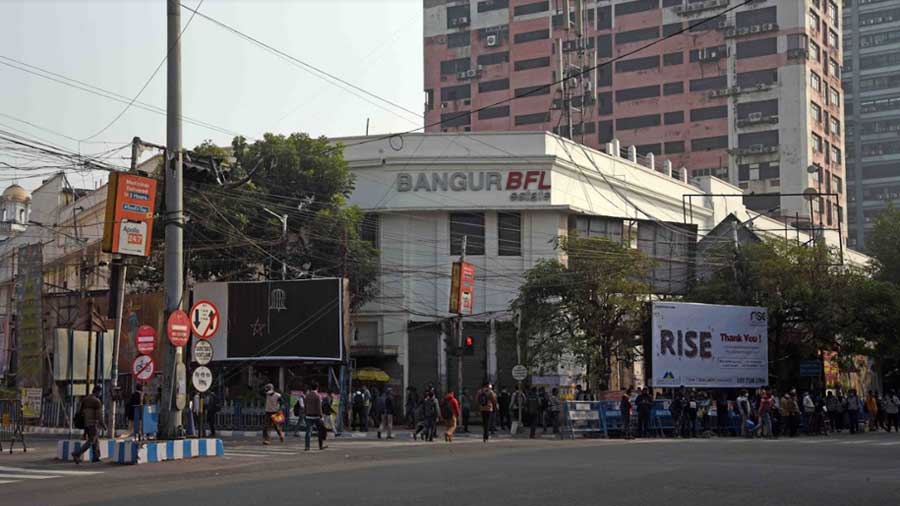
The building that now stands at the Park Street crossing (above), is much altered from the original complex of Hall & Anderson built in 1925 (below)
Amit Datta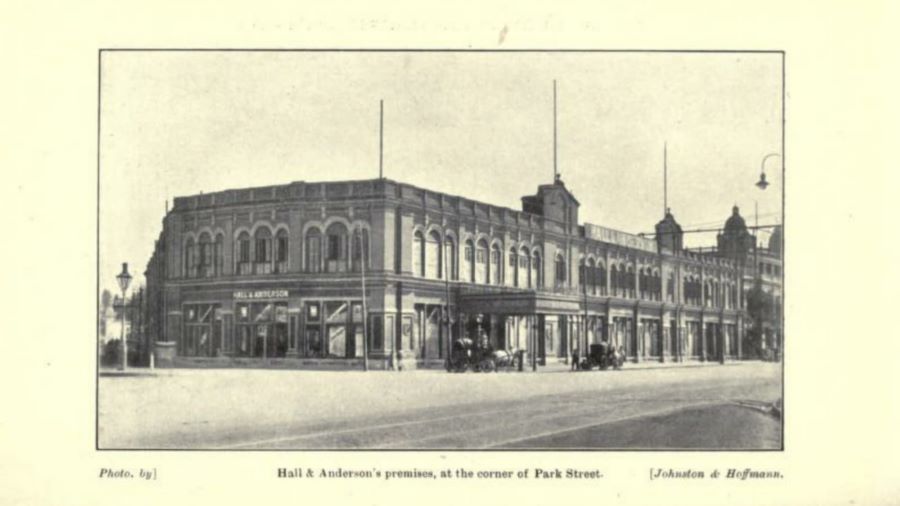
A little way down from Kanak Building, at Park Street crossing, is a white building that once housed the blue-chip retail haven, Hall & Anderson. The British owners, P. N. Hall and William Anderson, were originally employees of Calcutta’s largest drapery store Francis, Harrison, Hathway & Co. They started out with a small shop in Chowringhee before moving into the premises of Whiteaway Laidlaw. Next, they bought a property on the corner of Chowringhee and Park Street, and in 1925 the whole complex was built anew. Hall & Anderson occupied a sprawling half-million sq ft space within the building, whose facade sported deep pillared arcades. The building today we see today is a much-modified form of the original facade of 1925.
They were pioneers of Calcutta’s retail world, stocking the latest
English and continental products. They were the first to introduce
kitchenware and ironmongery as separate departments within their store
and sold custom-made furniture too. Shoppers came from all over India
and other countries. They even had a system of mail orders for faraway
patrons.
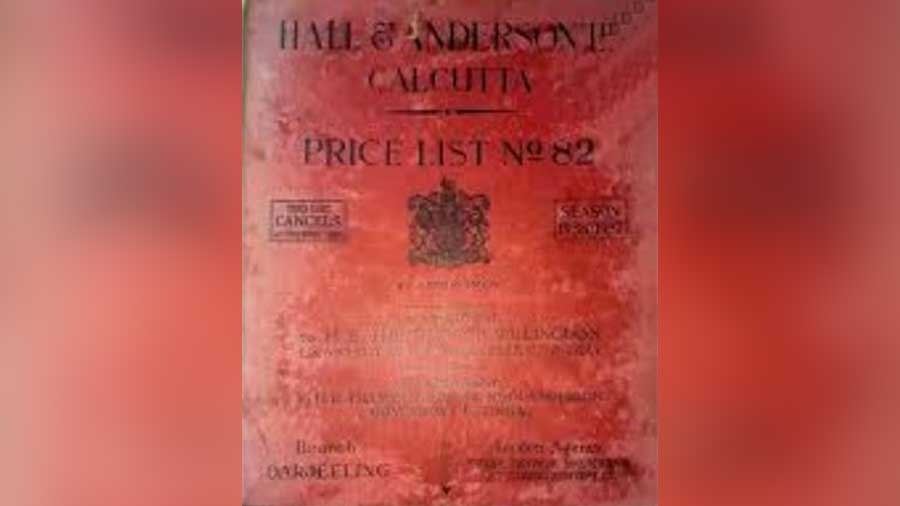
Hall & Anderson’s catalogue was highly awaited in most wealthy households of the city, especially in the days leading up to Christmas
With the onset of winter, the Indian and British aristocracy would make their way to Calcutta, often considered only second to London in its importance within the empire. During this time, and with Christmas fast approaching, their catalogue was highly awaited in most wealthy households until they wrapped up operations in 1946, selling the space to Sahan Lai Jajodia.
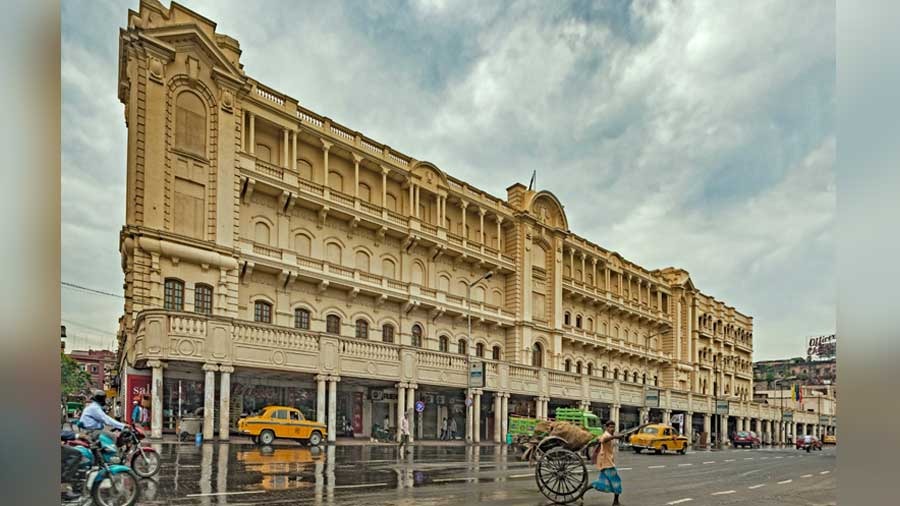
The only remnant of Calcutta’s retail giants are the stunning facades that still stand on Kolkata’s busy Chowringhee Road (Jawaharlal Nehru Road)
ShutterstockThe elite retail trade of Calcutta flourished in the early 20th century and these upscale establishments were household names across India and Britain. The colonial emporiums opened multiple outlets abroad, especially Whiteaway Laidlaw, which had branches in Colombo, Myanmar (Burma), Straits Settlements and Shanghai. World War II, followed by the declaration of Independence in India, brought the demise of these colonial retail giants.
Today, the legacy remains in these eye-catching facades. Next time you’re in that side of town, take a moment to stop and admire the history hidden in these everyday city sights.
Comments
Post a Comment